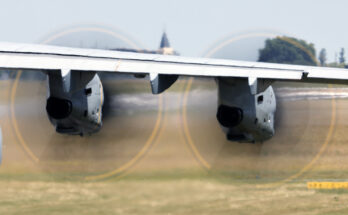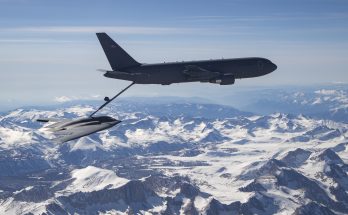China continues its onward march toward building up its powerful military and firmly cementing itself as its region’s hegemonic power. Beijing released its official 2019 figures for defense spending on March 4 and, as usual, the defense budget will remain on an upward trajectory, with nominal growth amounting to 7.5 percent year-on-year. This will bring the official topline figure to CNY1.19 trillion ($177.5 billion) for the year, up from 2018’s CNY1.107 trillion ($165 billion) when the budget expanded nominally by around 8.2 percent.
The spending hike comes as China’s economy experiences slower growth this decade than it did during the breakneck annual expansions of the first decade of the 2000s. The government is targeting economic growth of 6.0-6.5 percent this year, which – while still healthy – remains well below the 10.5 percent average between 2001 and 2011.
In the past, the annual defense budget has roughly paralleled the expansionary pace of the economy – when the economy is booming, the defense budget spikes in accordance; when economic headwinds emerge, defense spending slows.
What is noteworthy about the last few years in Chinese defense investment is that, under President Xi Jinping, who assumed office on March 14, 2013, there has been a slight decoupling of this former pattern – albeit in nominal terms. With inflation averaging 1.9 percent in January and estimates for the year ranging as high as 2.8 percent, the topline figure carries less buying power.
However, China’s actual defense spending figures are no doubt considerably higher than the “official” figure.
Whereas the U.S., Japan, Australia, and many other nations provide budgetary transparency by noting spending allocations in exact detail, China pulls an opaque shade over anything that might shed even the most limited light on its budget. Elements such as military technological research and development and even some major weapons purchases are believed to be kept off-budget, thus raising actual defense investment figures to well beyond the topline figure published by the Chinese state.
#China will not even release something as simple as a precise & credible breakdown of its spending by service.
Given this opacity, many observers around the world remain curious to know more about the world’s second-most powerful military, with the world’s second-largest budget.
— Andrew Erickson 艾立信 (@AndrewSErickson) March 5, 2019
The ongoing military budgetary spree has fueled rapid modernization of the People’s Liberation Army (PLA) and its associated service branches.
In particular, the spending of the past two decades has allowed for the largest maritime expansion in modern history, providing tremendous capacity in terms of capital ships for the People’s Liberation Army Navy (PLAN), the China Coast Guard (CCG) and the People’s Armed Forces Maritime Militia (PAFMM). These each help China to underwrite its claims in both the East China and South China seas, providing it with overarching capacity to extend the country’s naval outreach and territorial claims and achieve peer dominance over regional actors.
While Chinese authorities seek to downplay the country’s military buildup by noting the difference between military spending by the U.S. and China as a percentage of gross domestic product (China’s is smaller), the comparison is faulty in that the U.S. military (and Navy in particular) is charged with maintaining a global presence and conducting operations worldwide. China, meanwhile, has only to achieve dominance in its own regional domain, which – by capacity standards – it is already doing.
and it is much more focused than US spending, and is able to leapfrog on many fronts by drawing on US tech transfer and past R&D. Better comparison is how much PRC spends preparing to fight US (adjusted for "free" R&D) with how much US spends preparing to fight PRC https://t.co/yW74p3YuSR
— The China Bore (@Mcb18125448) March 5, 2019
With Chinese officials and analysts noting that the rate of defense spending growth is set to “fall” in 2019, and that China’s budget amounts to slightly less than 1.3 percent of GDP, the facts of the matter are that China is home to the world’s second-largest economy and its GDP continues to rise annually. Thus, 1.3 percent of China’s GDP allows Beijing to fund the second-largest defense budget in the world and equip a powerful military with ever-more modern equipment, all while continuing to develop advanced technologies with which to erode the U.S. qualitative military-technological edge.
Dan Darling is Forecast International’s director of military and defense markets. In this role, Dan oversees a team of analysts tasked with covering everything from budgeting to weapons systems to defense electronics and military aerospace. Additionally, for over 17 years Dan has, at various times, authored the International Military Markets reports for Europe, Eurasia, the Middle East and the Asia-Pacific region.
Dan's work has been cited in Defense News, Real Clear Defense, Asian Military Review, Al Jazeera, and Financial Express, among others, and he has also contributed commentary to The Diplomat, The National Interest and World Politics Review. He has been quoted in Arabian Business, the Financial Times, Flight International, The New York Times, Bloomberg and National Defense Magazine.
In addition, Dan has made guest appearances on the online radio show Midrats and on The Media Line, as well as The Red Line Podcast, plus media appearances on France 24 and World Is One News (WION).




